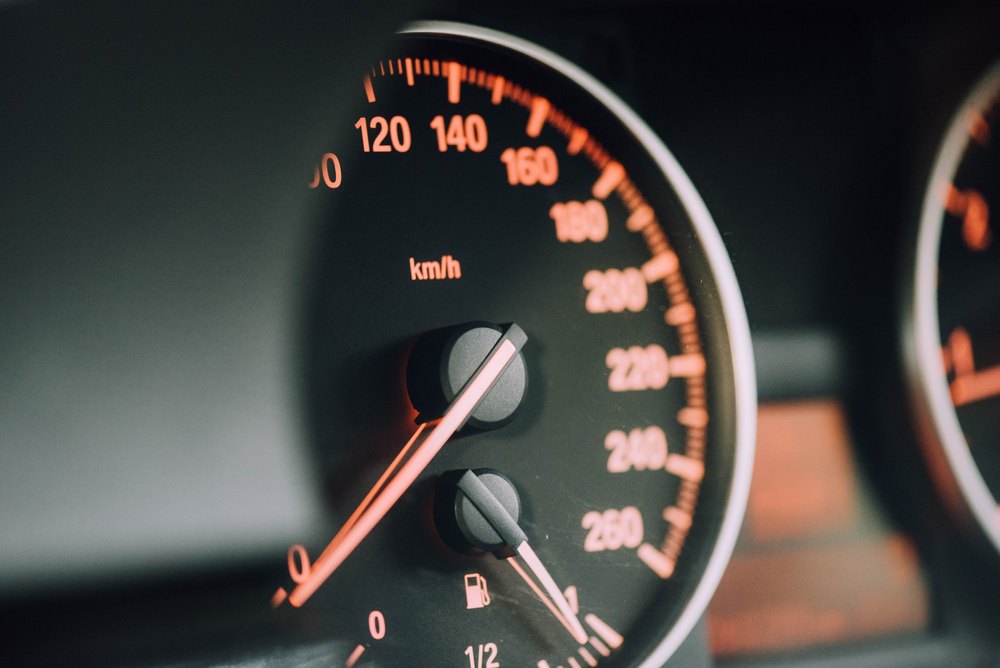Driving on reserve or low fuel is a situation that most drivers have experienced at some point in their lives. Whether it’s because you misjudged the distance to the next gas station or simply forgot to fill up before a long trip, driving on reserve can be a nerve-wracking experience. While it may seem like a minor inconvenience, it’s important to understand the risks and potential consequences of running your car on low fuel. In this article, we’ll explore the tips and risks of driving on reserve, covering everything from fuel efficiency and engine damage to safety concerns and best practices for managing your fuel consumption. So, whether you’re a seasoned driver or a new driver, read on to learn how to safely navigate the roads on low fuel.
Understanding Fuel Reserve and Warning Indicators
When it comes to driving on reserve, one of the most important things to understand is your vehicle’s fuel reserve and warning indicators. These indicators are designed to alert you when your fuel tank is running low and you need to refuel soon.
Most cars have a low fuel warning light that will illuminate on the dashboard when the fuel level drops to a certain point. This light is usually accompanied by a chime or beep to grab your attention. Additionally, some vehicles may also have a fuel gauge with a reserve section marked by a different color or line.
It’s important to understand what your vehicle’s warning indicators mean and how much fuel you have left when they activate. Depending on the make and model of your car, the warning light may come on when you have anywhere from 1/8th to 1/4th of a tank of fuel remaining.
Keep in mind that driving on reserve is not recommended and can be risky. If you’re driving on low fuel, it’s important to make refueling a top priority to avoid running out of gas and potentially getting stranded on the side of the road. So, always pay attention to your car’s fuel reserve and warning indicators to avoid getting caught off guard.
Calculating Your Car’s Fuel Efficiency and Range
To effectively manage your fuel consumption when driving on reserve, it’s important to understand your car’s fuel efficiency and range. This will help you calculate how far you can travel with the fuel you have left and make informed decisions about when to refuel.
The first step to calculating your car’s fuel efficiency is to fill up your gas tank completely and reset your trip odometer. Then, drive normally until you have used up about half of the gas in your tank, making a note of how many miles you have traveled. Once you’ve used up half the gas, fill up your tank again and note how many gallons it took to fill it up.
Next, subtract the number of miles traveled from your trip odometer by the amount of gas you added to the tank. This will give you your car’s average miles per gallon (MPG) for that period of driving. Repeat this process a few times to get an accurate average MPG for your vehicle.
Once you have determined your car’s average MPG, you can use this information to calculate your car’s range. Simply multiply your car’s average MPG by the number of gallons of gas left in your tank to get an estimate of how many miles you can drive before you need to refuel.
It’s important to note that your car’s fuel efficiency can vary depending on a variety of factors, such as driving conditions, vehicle maintenance, and your driving habits. However, by regularly monitoring your car’s fuel efficiency and range, you can better manage your fuel consumption and avoid running out of gas while driving on reserve.
Factors that Affect Fuel Consumption and Mileage
There are many factors that can affect your car’s fuel consumption and mileage, which in turn can impact how often you need to refuel and how far you can travel on reserve. Understanding these factors can help you make more informed decisions about your driving habits and fuel consumption.
One of the biggest factors that affect fuel consumption is your driving style. Aggressive driving habits such as rapid acceleration, speeding, and frequent braking can significantly decrease your car’s fuel efficiency. On the other hand, smooth and steady driving can help improve your car’s fuel efficiency and mileage.
Other factors that affect fuel consumption include the type of road surface you are driving on, the weather conditions, and the weight of your vehicle. Driving on rough or uneven roads can decrease your fuel efficiency, while driving on smooth roads can improve it. Cold weather can also decrease your car’s fuel efficiency, as it takes longer for your engine to warm up and operate efficiently. Additionally, carrying heavy loads or excess cargo can decrease your car’s fuel efficiency and mileage.
Maintenance is also an important factor when it comes to fuel consumption. Regularly maintaining your vehicle with oil changes, tire rotations, and air filter replacements can help ensure that your car is running at peak efficiency and maximize your fuel efficiency.
By understanding these factors that affect fuel consumption and mileage, you can make more informed decisions about your driving habits and fuel consumption to ensure that you are getting the most out of every tank of gas.
Safety Concerns when Driving on Low Fuel
Driving on low fuel can present safety concerns that should not be taken lightly. Here are some of the safety issues to be aware of when driving on reserve:
- Stalling: If you run out of gas while driving, your car may stall in the middle of the road, putting you and other drivers in danger.
- Reduced Engine Performance: When you’re running on low fuel, your car’s engine may not perform at its best, which can make it harder to accelerate or climb hills. This can be particularly dangerous when passing or merging with traffic.
- Reduced Visibility: Driving at night or in bad weather with low fuel can be dangerous, as your headlights and windshield wipers may not function properly if your car’s electrical system fails due to low battery power.
- Increased Risk of Accidents: When driving on low fuel, you may be more likely to speed, drive aggressively, or take unnecessary risks to make it to the next gas station. This can increase your risk of accidents or other incidents on the road.
To avoid these safety concerns, it’s important to always keep your gas tank above the reserve level and to refuel as soon as possible when the low fuel warning indicator comes on. Additionally, it’s important to regularly maintain your vehicle to ensure that it is running efficiently and safely. By staying on top of your fuel levels and vehicle maintenance, you can help ensure that you are driving safely and responsibly on the road.
What Happens to Your Engine when You Run on Empty?
Running your car on empty or with very low fuel can cause serious damage to your engine. Here are some of the potential consequences of running on empty:
- Fuel Pump Damage: Your car’s fuel pump is responsible for pumping fuel from the tank to the engine. When you run your car on empty, the fuel pump can overheat and become damaged, potentially leading to costly repairs.
- Catalytic Converter Damage: Your car’s catalytic converter is responsible for reducing harmful emissions from the engine. When you run on empty, unburned fuel can enter the catalytic converter and cause damage, leading to costly repairs or replacement.
- Damage to Fuel Injectors: When your car runs on low fuel, the fuel injectors may not receive enough fuel to operate properly. This can cause them to overheat and become damaged, potentially leading to costly repairs.
- Engine Damage: Running your car on empty can cause your engine to overheat, as there is not enough fuel to cool the engine properly. This can cause damage to the engine, potentially leading to costly repairs or even engine failure.
In addition to these potential damages, running on empty can also increase the risk of getting stranded on the side of the road, which can be dangerous and inconvenient.
To avoid these potential consequences, it’s important to always keep your gas tank above the reserve level and to refuel as soon as possible when the low fuel warning indicator comes on. By doing so, you can help ensure that your engine stays healthy and avoid costly repairs or damage to your vehicle.
The Costs of Running Out of Fuel: Towing, Repairs, and More
Running out of fuel can result in more than just inconvenience; it can also lead to a variety of costs associated with repairs, towing, and more. Here are some of the potential costs of running out of fuel:
- Towing Fees: If your car runs out of fuel and you are unable to refill it yourself, you may need to pay for a tow truck to transport your car to a gas station or repair shop. Towing fees can vary depending on the distance and time of day, but they can add up quickly.
- Engine Damage: As mentioned previously, running on empty can cause serious damage to your car’s engine, potentially leading to costly repairs or even engine failure.
- Catalytic Converter Damage: A damaged catalytic converter due to running on empty can also result in costly repairs or replacement.
- Misdiagnosis: If your car experiences problems due to running on empty, it may be misdiagnosed as a mechanical issue rather than a fuel-related issue. This can lead to costly repairs that don’t actually fix the problem.
- Time and Inconvenience: Running out of fuel can result in lost time and inconvenience, such as missing appointments or being late to work.
To avoid these potential costs and inconveniences, it’s important to always keep your gas tank above the reserve level and to refuel as soon as possible when the low fuel warning indicator comes on. By doing so, you can help ensure that you are driving safely and responsibly on the road while avoiding costly repairs and inconveniences associated with running out of fuel.
Best Practices for Driving on Reserve: Dos and Don’ts
Driving on reserve can be risky, but there are some best practices that you can follow to help ensure your safety and avoid costly repairs or inconvenience. Here are some dos and don’ts for driving on reserve:
Dos:
- Refuel at the First Opportunity: When the low fuel warning indicator comes on, make it a priority to refuel at the first available gas station. This will help ensure that you have enough fuel to make it to your destination safely.
- Monitor Your Fuel Level: Keep an eye on your fuel level and monitor your fuel consumption to ensure that you don’t run out of gas unexpectedly. This will also help you plan your refueling stops more effectively.
- Keep Your Vehicle Maintained: Regular maintenance, such as oil changes, air filter replacements, and tire rotations, can help ensure that your vehicle is running efficiently and avoid fuel consumption issues that can put you at risk.
- Plan Your Route: When traveling long distances, plan your route ahead of time to ensure that you have plenty of opportunities to refuel along the way.
Don’ts:
- Ignore the Warning Indicators: Never ignore the low fuel warning indicator or assume that you can make it to your destination without refueling. This can be dangerous and lead to costly repairs or inconvenience.
- Drive Aggressively: Avoid aggressive driving habits such as rapid acceleration, speeding, and frequent braking, as these can decrease your car’s fuel efficiency and make it harder to travel on reserve.
- Carry Excess Weight: Avoid carrying excess weight in your vehicle, as this can decrease your car’s fuel efficiency and mileage, potentially putting you at risk if you’re driving on reserve.
By following these best practices for driving on reserve, you can help ensure your safety and avoid costly repairs or inconvenience associated with running out of fuel. Remember to always prioritize refueling and keep an eye on your fuel level to ensure that you’re driving safely and responsibly on the road.
Managing Your Fuel Consumption on Long Trips
Long trips can be challenging when it comes to managing your fuel consumption. Here are some tips to help you make the most out of your fuel on long trips:
- Plan Your Route: Before embarking on a long trip, plan your route carefully to ensure that you have plenty of opportunities to refuel along the way. Use online maps and tools to identify gas stations, rest areas, and other amenities along your route.
- Pack Light: Excess weight in your vehicle can reduce your fuel efficiency and increase your fuel consumption. Before heading out on your trip, pack only what you need and remove any unnecessary items from your vehicle.
- Check Your Tire Pressure: Properly inflated tires can improve your car’s fuel efficiency, so be sure to check your tire pressure before heading out on your trip. Check your car’s owner’s manual or the sticker on the driver’s side doorjamb for recommended tire pressure levels.
- Avoid Aggressive Driving: Aggressive driving habits such as rapid acceleration, speeding, and frequent braking can significantly decrease your car’s fuel efficiency. Drive smoothly and steadily to maximize your fuel efficiency and make the most out of your fuel.
- Use Cruise Control: When driving on long stretches of highway, use cruise control to maintain a steady speed and reduce the amount of fuel your car consumes.
- Maintain Your Vehicle: Regular maintenance, such as oil changes, air filter replacements, and tire rotations, can help ensure that your vehicle is running efficiently and avoid fuel consumption issues that can put you at risk.
By following these tips for managing your fuel consumption on long trips, you can help ensure that you’re getting the most out of your fuel and avoid running out of gas unexpectedly. Remember to plan ahead, pack light, and drive smoothly to maximize your fuel efficiency and enjoy a safe and enjoyable trip.









